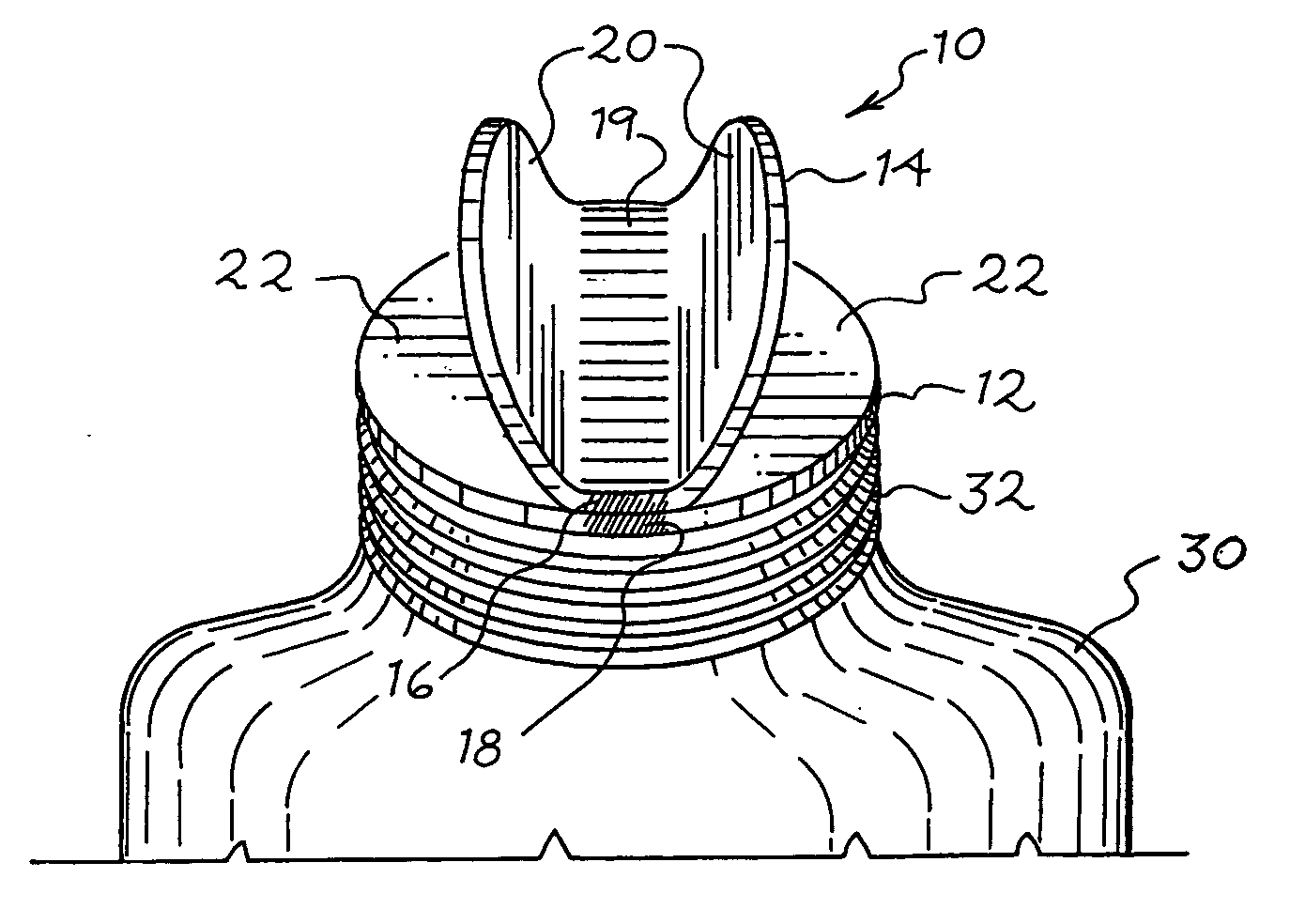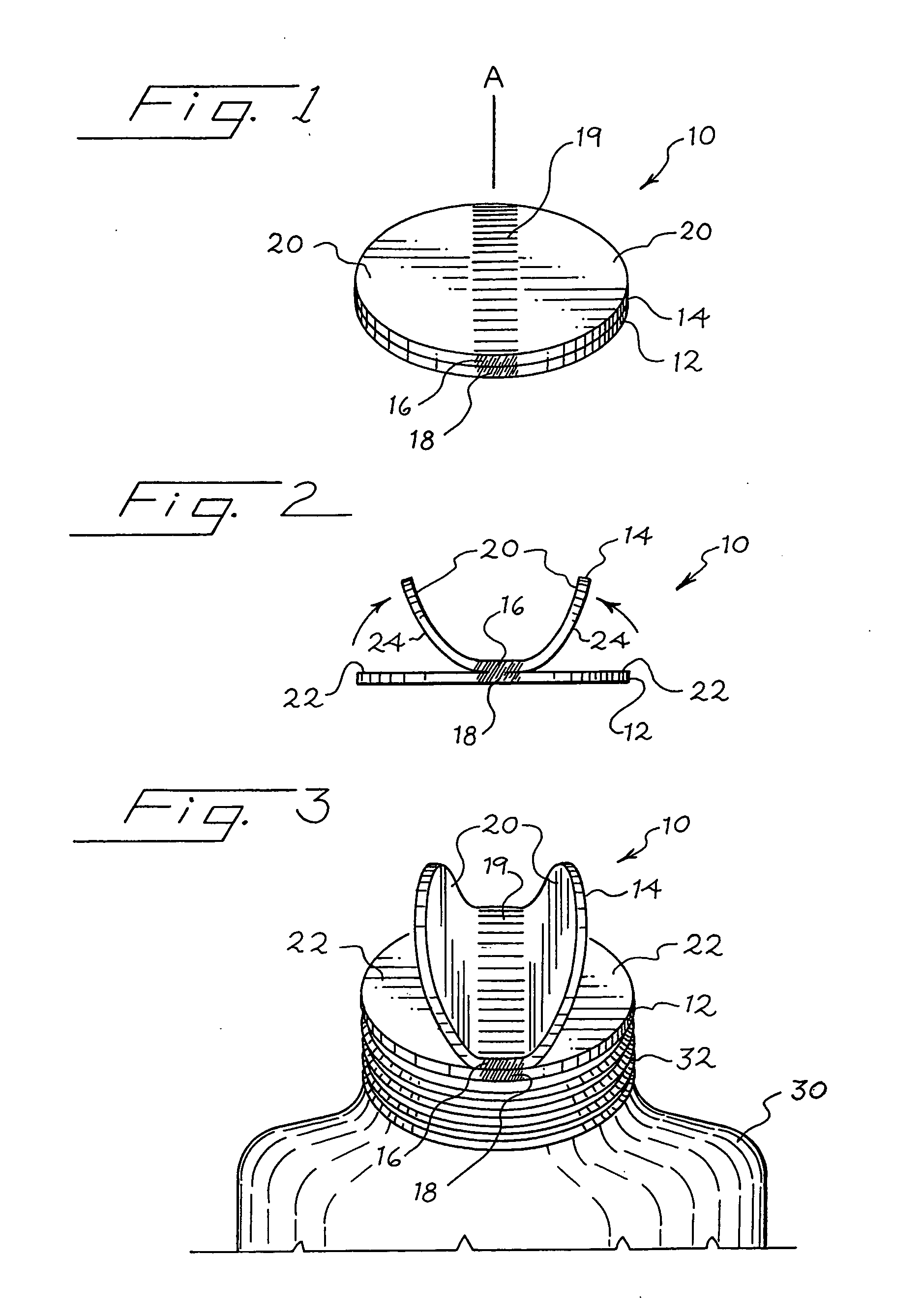Tabbed container seal and method of manufacture
a technology of tabbed container and seal, which is applied in the direction of seals, identification means, instruments, etc., can solve the problems of non-uniform inductive sealing, delamination of seals, and non-uniform overall thickness of tabs relative to the rest of the seal, and achieves reliable seal removal mechanism, uniform overall thickness, and simple manufacturing.
- Summary
- Abstract
- Description
- Claims
- Application Information
AI Technical Summary
Benefits of technology
Problems solved by technology
Method used
Image
Examples
Embodiment Construction
[0038] As used herein, the term “closure” and grammatical variations thereof, refers to a lid or cap, such as a threaded cap, a lug-type cap, a snap-cap, and the like, that is designed to be repeatedly secured to and removed from a container finish, such that when the cap or lid is secured to the container finish, a seal is formed that protects the contents of the container from contamination and leakage.
[0039] The terms “lining material” and “liner” refer to a sheet material that is compressible and preferably semirigid, and is suitable for use within a closure to provide a resealable seal between the closure and a container finish. The term “liner” also refers to a section of lining material that has been cut to fit snugly within a closure against the upper inside surface thereof.
[0040] The term “seal” refers to a film or multilayer laminate material that is adhesively secured or heat-sealed over the finish of a container to provide an air and / or fluid tight seal. To access the ...
PUM
| Property | Measurement | Unit |
|---|---|---|
| temperature | aaaaa | aaaaa |
| temperature | aaaaa | aaaaa |
| thickness | aaaaa | aaaaa |
Abstract
Description
Claims
Application Information
 Login to View More
Login to View More - R&D
- Intellectual Property
- Life Sciences
- Materials
- Tech Scout
- Unparalleled Data Quality
- Higher Quality Content
- 60% Fewer Hallucinations
Browse by: Latest US Patents, China's latest patents, Technical Efficacy Thesaurus, Application Domain, Technology Topic, Popular Technical Reports.
© 2025 PatSnap. All rights reserved.Legal|Privacy policy|Modern Slavery Act Transparency Statement|Sitemap|About US| Contact US: help@patsnap.com



